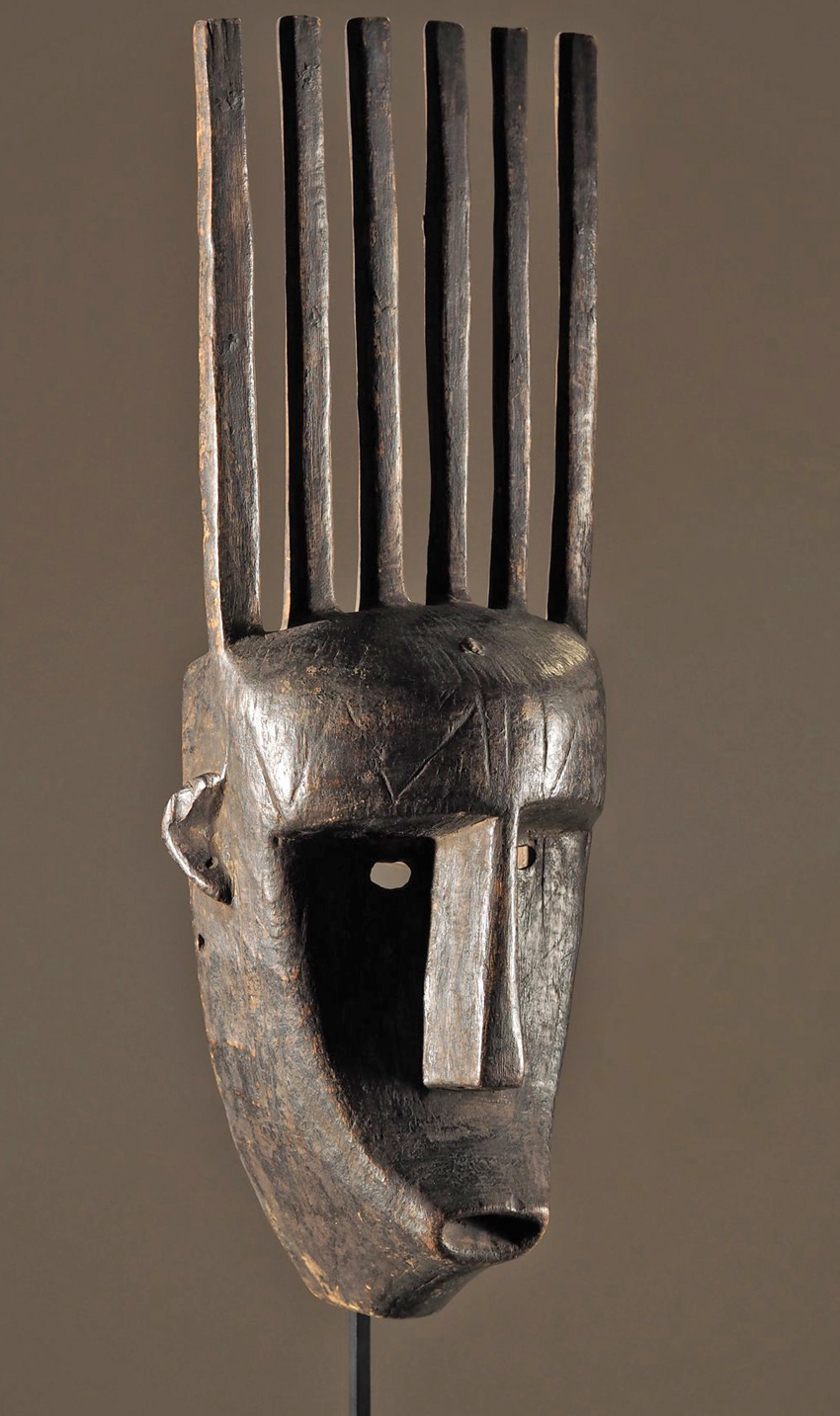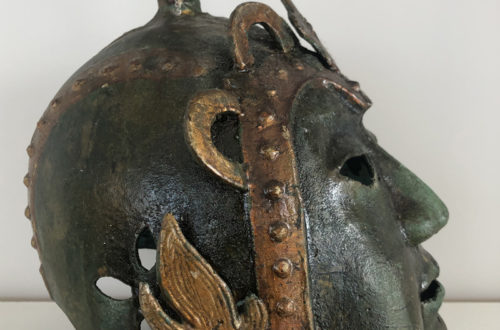 Masks are appealing because of how the look… and what they tell us about a culture. A young woman who majored in psychology wrote this paper in college. I hope you enjoy it.
Masks are appealing because of how the look… and what they tell us about a culture. A young woman who majored in psychology wrote this paper in college. I hope you enjoy it.
The Bamana are a large and powerful ethnic group in Mali, West Africa. Both Islamic and traditional religious views are entwined in Bamana culture. The political structure is patrimonial, meaning positions are inherited and handed down through the male side of the family. Political leaders also control the group’s religious arrangement. Adulthood is earned through the process of six major initiation societies, collectively called the jow, which are used as both a religious and educational system. Bamana males go through all six of the societies in order to be able to marry and start their role in adulthood, while Bamana females go through just one initiation society. Each of these different societies within the Bamana culture has its own unique masks. The mask in the PLU collection belongs to one of these, the ntomo society.
The ntomo society is a five year period for uncircumcised boys, and the first society of the six they go through to become recognized as men. Boys are taught to accept discipline and endure hardship quietly, which includes ritual flagellation sessions in complete silence. This experience is reflected in the ntomo society’s masks, which have small shut mouths or no mouth at all. Mask dancers also carry whips with them, which relates to ritual flagellation. Silence is also taught as the lesson of keeping secrets.
The last event for a member in this society is circumcision, which is believed to be the physical destruction of childhood androgyny. The Bamana believe that the male foreskin is feminine and removal of it allows a boy to mature into a man. This belief is also reflected in their masks. The number of horns on a mask indicate the gender of the dancer’s role: females are represented by four or eight horns, males are represented by three or six horns, and androgyny is represented by two, five, or seven horns.
The members of the ntomo society make their own masks, which allows for many variations in design, but they all have the same purpose of being beautiful. Often cowrie shells and small red or orange airbus seeds, are used to enhance the design of a mask. Other societies’ masks can represent animals, but ntomo masks are anthropomorphic, which means they have human aspects to their form. The usual human characteristics used are a long straight nose, small mouth, and eyes.
The annual ntomo initiation ceremony, when these masks are used, takes place during harvest time. The ntomo masks can also be seen in dances during other times of the year, such as during the dry season. The masks are worn while dancing, and are meant to look beautiful on a talented dancer. Dancers are dressed either in white or ochre, an earthy pigment of reddish coloring. After circumcision and graduation from the ntomo society, the male’s next step in life depends on his own personal background and family history. From this point on, the boys will be trained to follow their father’s role in society; many follow their family’s history of being farmers. Madeline, A





